
Did you need a distraction from all of the sad news coming
out of Boston tonight? I know that
I do. Which is why — rather than watch that footage of the explosion at the
marathon's line yet again — I picked up a copy of Doug Lipp
's terrific tome, " Disney U: How
Disney University develops the World's most engaged, loyal, and customer-centric
employees
" ( McGraw-Hill
, March 2013).
Given that Lipp helped create the first international
version of Disney University
(which was then used to train Cast Members for the April 1983 opening of Tokyo
Disneyland), Doug's the perfect guy to take you behind-the-scenes at this
somewhat mysterious educational arm of The Walt Disney Company. Which teaches
the Mouse House's 166,000 employees that they should always be on the lookout
for ways that they can improve the Guest's / customer's experience.
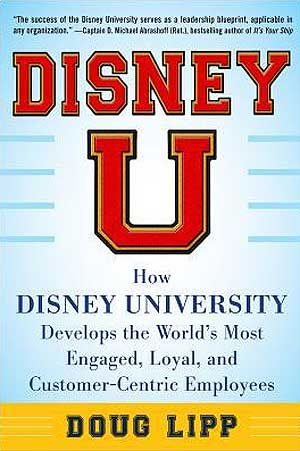 Copyright McGraw-Hill. All rights reserved
Copyright McGraw-Hill. All rights reserved
And this always-be-looking-for-ways-to-improve-things
attitude can be traced right back to the Old Mousetro himself. Who — in a neat
little story that Lipp shares in this 222-page hardcover — surprised an hourly
Cast Member one day during the early 1960s as Walt was looking for ways to
improve one of the Happiest Place on Earth's then- newer attractions:
The Fantasyland ride operator is busily moving the Skyway
gondolas through the loading area. It is midwinter, and there aren't many
guests at Disneyland, nor on his attraction. He turns
briefly and is startled to see Walt Disney sitting on a bench watching him.
Walt calls out, "Can I talk to you for a minute?"
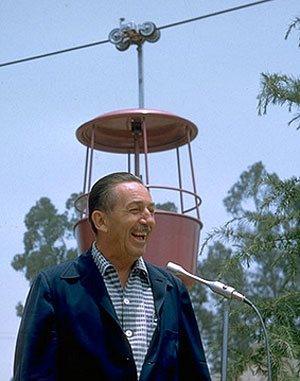
Copyright Disney Enterprises, Inc.
All rights reserved
"Yes sir," says the cast member, as he nervously makes his way to the
bench to sit next to Walt. While he has heard about these moments when Walt
would unexpectedly emerge, this is a first for him.
"We're thinking of updating the Skyway," Walt
informs him. "You work on this attraction every day, so I can't think of
anyone more qualified to give me ideas for the new design."
A bit surprised, the cast member considers Walt's comment, and then offers his
suggestion. "Actually, the gondola roofs are too low and Guests often bump
their heads when I load and unload them."
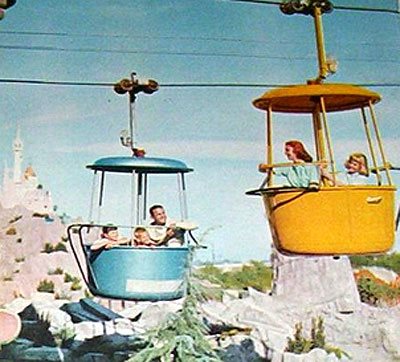
Copyright Disney Enterprises, Inc. All rights reserved
When they finished this brief exchange of ideas, Walt thanked him. Intending to
get a closer look at the attraction, Walt proceeded to board one of the
gondolas … and he bumped his head!
That's the real fun of "Disney
U." Doug understands that the
easiest way to get people to remember one of the 13 lessons in leadership &
company values that he's crammed into this McGraw-Hill Educational book is by
entertaining them. So Lipp sprinkles in laughs wherever he can. Take — for
example — this tale of what actually happened at Tokyo Disneyland's version of
The Haunted Mansion just prior to the opening of Walt Disney Productions' first
international theme park. In the years leading up to the opening of TDL …
… a core group of Japanese managers and supervisors have received months of
training from an elite group of Disneyland operations
professionals. Many Japanese managers were transferred to the United
States, spending months learning the details
of running a theme park, Disney style; some even participated in the grand
openings of attractions and theme parks in California
and Florida. But as with any
grand opening, there are endless details and many fingers in the pie, and some
things simply fall through the cracks.
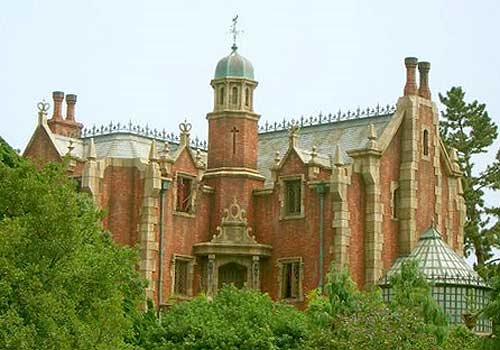
Copyright Disney Enterprises, Inc. All rights reserved
In preparation for the press event (which would be held to
commemorate the grand opening of Walt Disney Productions' first international
theme park), the custodial and grounds-keeping crews have been hard at work
cleaning, polishing, and scrubbing every attraction, every restaurant, and
every store. Flower beds are repeatedly checked for wilted or dying plants.
Tokyo Disneyland is spotless and ready for the big day.
And this created a huge problem.
Enthusiastically embracing the mission to "make the
park shine," the custodial crew cleaned the Haunted
Mansion. It's just prepped and
readied for the big day; it is spotless! All the dust is gone. The spooky
cobwebs have been removed. The Haunted
Mansion is immaculate — it no
longer looks HAUNTED.
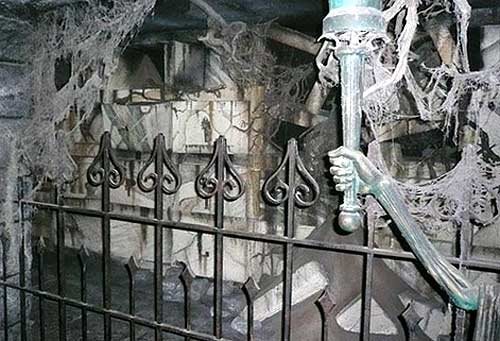
Copyright Disney Enterprises, Inc. All rights reserved
Ron Pogue
, vice president of Disneyland International and Walt Disney
Attractions, Japan,
recalls, "The Japanese custodial crew wanted everything to look perfect
for the press event. So they tidied up the old mansion." Unfortunately, in
their enthusiasm, the custodians managed to eliminate meticulously created and
specifically placed artwork. They removed all the rubber cement cobwebs,
wallpaper stains, and dust on the velvet curtains that had been purposely and
carefully applied by a team of artists to make the place look haunted. The art
of aging and graining, a process commonly used in the worlds of theater and
film, involves the precise application of paint and other materials to on-stage
props and buildings, creating a sense of realism. In the Haunted
Mansion, artists spent week
transforming the newly built mansion into an old, decrepit haunted mansion. In
one night, the graveyard custodial crew transformed the aged and grained Haunted
Mansion into a building so clean,
shiny, and spotless, it could have the white-gloved inspection of the strictest
inspectors.
Steve Lewelling, the director of operations at Tokyo
Disneyland, has a lasting memory of the incident. Living in Japan
as part of the start-up team, Steve got a wake-up call — literally. "The
call came at 2 a.m. My manager of custodial,
another American expatriate, called me at home, woke me up, and said, 'Steve,
they've cleaned the Haunted Mansion!'
I couldn't believe this guy was calling me in the middle of the night simply to
tell me the Japanese custodians had done their job." As the details
started to emerge, Steve realized the gravity of the situation. What had taken
the artists three weeks to create had gone down the drain. "We had just
put the artists on a plane and sent them back to California,"
recalls Steve. "I was on the telephone scrambling to get them back, and
their plane hadn't even landed in Los Angeles!"
And it's not just Walt Disney Parks & Resorts that Doug
Lipp takes you behind-the-scenes at. He also has lots of great stories that
deal with the Studio side of the operation. Take — for example — how Disney
lost out on a boatload of dough back in late 1989 / early 1990 because various
arms of the Company weren't communicating all that effectively back then:
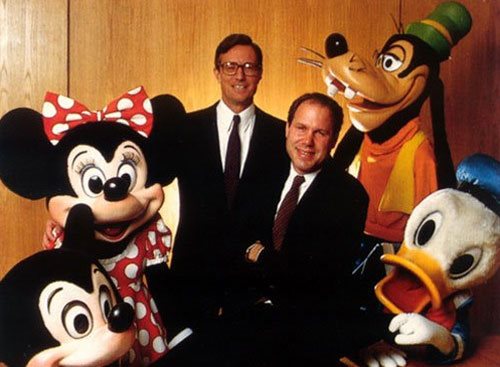
Copyright Disney Enterprises, Inc. All rights reserved
As part of (their) strategy to reinvigorate the Disney
Studio — and the whole company — Michael (Eisner
) and Frank (Wells) were
determined to foster a culture of creativity, innovation, and accountability.
Several years after they joined the company, the new entrepreneurial culture
they created was already reaping great rewards; the 1989 smash hit The Little
Mermaid
was a direct result. But there was also an unintended negative
consequence.
(As Carol Davis-Fernald — who started out as a trainer in
the Disney University
and eventually rose to a position of vice president of human resources and
employee initiatives at the Company — recalled:) "The Little Mermaid was
a blockbuster hit in the theaters, but we didn't fully leverage that success in
consumer products; retail sales of The Little Mermaid-themed merchandise such
as dolls and games didn't fare as well as they could have."
The problem was product volume and variety. In light of the
unparalleled success of the movie, there was a lack of mermaid-themed
merchandise in stores. The consumer products team hadn't been involved in
developing merchandise until late in the game, and since the product
development cycle — from initial ideas to products on store shelves — is
long, there hadn't been time to catch up. The lack of timely communication and
collaboration between business had become a major problem.
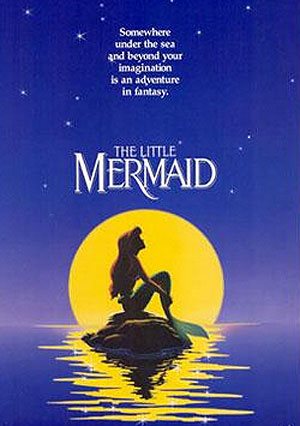
Copyright Disney Enterprises, Inc.
All rights reserved
(In the wake of these lost merchandising opportunities from
The Little Mermaid), Retailing specialists from consumer products were brought
in to share research data (with Mouse House upper management).
"Every executive in the room reacted in the same way: Look
at the opportunity we missed," says Carol. The importance of involving a
more diverse team, even from the earliest levels of script development, became
one of the many learning points garnered by those attending (this after-actions
meeting).
The tremendous increase in the volume of merchandise sales
for subsequent films as Beauty and the Beast
and The Lion King
provides
testimony to the power of improved communication and the synergy that (this
in-house meeting in 1990) helped foster.
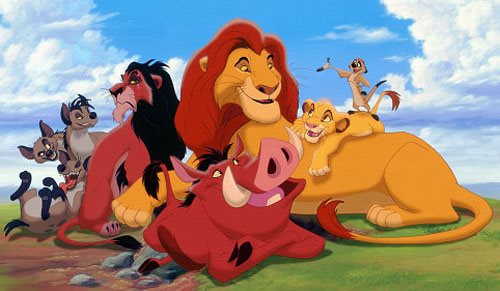
Copyright Disney Enterprises, Inc. All rights reserved
And Doug doesn't just take "Disney U" readers to behind-the-scenes
places at the Company's corporate headquarters. Lipp also journeys to the top
of WDW
's Cinderella Castle
.
To a room that …
… had no windows, nor was it painted. In fact, it was just
an empty space left over from construction, no more glamorous than an
unfinished attic.
Dick Nunis picked up the telephone and personally called the
vice presidents of every division, (inviting them to join him) high above the Magic
Kingdom
, (in a room that could only
be reached) via a small construction elevator or a steep, narrow staircase.
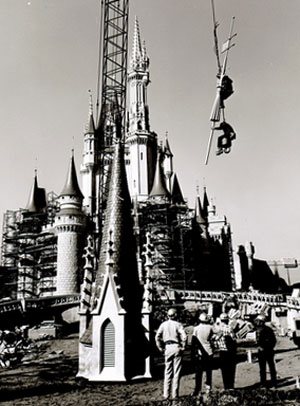
Copyright Disney Enterprises, Inc.
All rights reserved
So why did the then-executive vice president of Disneyland
and Walt Disney World invite all of these VPs to join at the top of CinderellaCastle? Lipp shines a spotlight on
a little known moment in WDW history. A time in early 1973 when …
… the barometer of employee morale, the turnover rate, was hovering near 83
percent; employees were leaving the company in such high numbers that the
recruiting and training teams could barely fill the gaps. They had long since
passed the service industry average of 55 percent.
By 1973, the original team of 5,500 Cast Members had ballooned to almost
10,000. Employees and managers (were
experiencing) burnout.
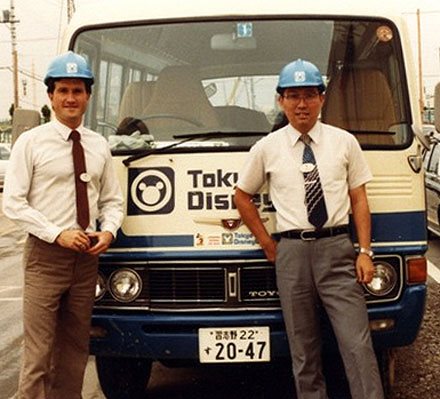
Copyright G. Doug Lipp & Associates. All rights reserved
So what did Dick and his cadre of WDW vice presidents do to turn around the
Resort's employee retention levels? You're going to have to pick up a copy of
" Disney U
," Doug Lipp's extremely entertaining & educational book
in order to find out.
Your thoughts?

History
The Evolution and History of Mickey’s ToonTown

Disneyland in Anaheim, California, holds a special place in the hearts of Disney fans worldwide, I mean heck, it’s where the magic began after all. Over the years it’s become a place that people visit in search of memorable experiences. One fan favorite area of the park is Mickey’s Toontown, a unique land that lets guests step right into the colorful, “Toony” world of Disney animation. With the recent reimagining of the land and the introduction of Micky and Minnies Runaway Railway, have you ever wondered how this land came to be?
There is a fascinating backstory of how Mickey’s Toontown came into existence. It’s a tale of strategic vision, the influence of Disney executives, and a commitment to meeting the needs of Disney’s valued guests.
The Beginning: Mickey’s Birthdayland
The story of Mickey’s Toontown starts with Mickey’s Birthdayland at Walt Disney World’s Magic Kingdom. Opened in 1988 to celebrate Mickey Mouse’s 60th birthday, this temporary attraction was met with such overwhelming popularity that it inspired Disney executives to think bigger. The idea was to create a permanent, immersive land where guests could step into the animated world of Mickey Mouse and his friends.
In the early ’90s, Disneyland was in need of a refresh. Michael Eisner, the visionary leader of The Walt Disney Company at the time, had an audacious idea: create a brand-new land in Disneyland that would celebrate Disney characters in a whole new way. This was the birth of Mickey’s Toontown.
Initially, Disney’s creative minds toyed with various concepts, including the idea of crafting a 100-Acre Woods or a land inspired by the Muppets. However, the turning point came when they considered the success of “Who Framed Roger Rabbit.” This film’s popularity and the desire to capitalize on contemporary trends set the stage for Toontown’s creation.
From Concept to Reality: The Birth of Toontown
In 1993, Mickey’s Toontown opened its gates at Disneyland, marking the first time in Disney Park history where guests could experience a fully realized, three-dimensional world of animation. This new land was not just a collection of attractions but a living, breathing community where Disney characters “lived,” worked, and played.
Building Challenges: Innovative Solutions
The design of Mickey’s Toontown broke new ground in theme park aesthetics. Imagineers were tasked with bringing the two-dimensional world of cartoons into a three-dimensional space. This led to the creation of over 2000 custom-built props and structures that embodied the ‘squash and stretch’ principle of animation, giving Toontown its distinctiveness.
And then there was also the challenge of hiding the Team Disney Anaheim building, which bore a striking resemblance to a giant hotdog. The Imagineers had to think creatively, using balloon tests and imaginative landscaping to seamlessly integrate Toontown into the larger park.

Key Attractions: Bringing Animation to Life
Mickey’s Toontown featured several groundbreaking attractions. “Roger Rabbit’s Car Toon Spin,” inspired by the movie “Who Framed Roger Rabbit,” became a staple of Toontown, offering an innovative ride experience. Gadget’s Go-Coaster, though initially conceived as a Rescue Rangers-themed ride, became a hit with younger visitors, proving that innovative design could create memorable experiences for all ages.
Another crown jewel of Toontown is Mickey’s House, a walkthrough attraction that allowed guests to explore the home of Mickey Mouse himself. This attraction was more than just a house; it was a carefully crafted piece of Disney lore. The house was designed in the American Craftsman style, reflecting the era when Mickey would have theoretically purchased his first home in Hollywood. The attention to detail was meticulous, with over 2000 hand-crafted, custom-built props, ensuring that every corner of the house was brimming with character and charm. Interestingly, the design of Mickey’s House was inspired by a real home in Wichita Falls, making it a unique blend of real-world inspiration and Disney magic.
Mickey’s House also showcased Disney’s commitment to creating interactive and engaging experiences. Guests could make themselves at home, sitting in Mickey’s chair, listening to the radio, and exploring the many mementos and references to Mickey’s animated adventures throughout the years. This approach to attraction design – where storytelling and interactivity merged seamlessly – was a defining characteristic of ToonTown’s success.

Executive Decisions: Shaping ToonTown’s Unique Attractions
The development of Mickey’s Toontown wasn’t just about creative imagination; it was significantly influenced by strategic decisions from Disney executives. One notable input came from Jeffrey Katzenberg, who suggested incorporating a Rescue Rangers-themed ride. This idea was a reflection of the broader Disney strategy to integrate popular contemporary characters and themes into the park, ensuring that the attractions remained relevant and engaging for visitors.
In addition to Katzenberg’s influence, Frank Wells, the then-President of The Walt Disney Company, played a key role in the strategic launch of Toontown’s attractions. His decision to delay the opening of “Roger Rabbit’s Car Toon Spin” until a year after Toontown’s debut was a calculated move. It was designed to maintain public interest in the park by offering new experiences over time, thereby giving guests more reasons to return to Disneyland.
These executive decisions highlight the careful planning and foresight that went into making Toontown a dynamic and continuously appealing part of Disneyland. By integrating current trends and strategically planning the rollout of attractions, Disney executives ensured that Toontown would not only capture the hearts of visitors upon its opening but would continue to draw them back for new experiences in the years to follow.
Global Influence: Toontown’s Worldwide Appeal
The concept of Mickey’s Toontown resonated so strongly that it was replicated at Tokyo Disneyland and influenced elements in Disneyland Paris and Hong Kong Disneyland. Each park’s version of Toontown maintained the core essence of the original while adapting to its cultural and logistical environment.
Evolution and Reimagining: Toontown Today
As we approach the present day, Mickey’s Toontown has recently undergone a significant reimagining to welcome “Mickey & Minnie’s Runaway Railway” in 2023. This refurbishment aimed to enhance the land’s interactivity and appeal to a new generation of Disney fans, all while retaining the charm that has made ToonTown a beloved destination for nearly three decades.

Dive Deeper into ToonTown’s Story
Want to know more about Mickey’s Toontown and hear some fascinating behind-the-scenes stories, then check out the latest episode of Disney Unpacked on Patreon @JimHillMedia. In this episode, the main Imagineer who worked on the Toontown project shares lots of interesting stories and details that you can’t find anywhere else. It’s full of great information and fun facts, so be sure to give it a listen!
History
Unpacking the History of the Pixar Place Hotel

Pixar Place Hotel, the newly unveiled 15-story tower at the Disneyland Resort, has been making waves in the Disney community. With its unique Pixar-themed design, it promises to be a favorite among visitors.
However, before we delve into this exciting addition to the Disneyland Resort, let’s take a look at the fascinating history of this remarkable hotel.
The Emergence of the Disneyland Hotel
To truly appreciate the story of the Pixar Place Hotel, we must turn back the clock to the early days of Disneyland. While Walt Disney had the visionary ideas and funding to create the iconic theme park, he faced a challenge when it came to providing accommodations for the park’s visitors. This is where his friend Jack Wrather enters the picture.
Jack Wrather, a fellow pioneer in the television industry, stepped in to assist Walt Disney in realizing his dream. Thanks to the success of the “Lassie” TV show produced by Wrather’s company, he had the financial means to build a hotel right across from Disneyland.
The result was the Disneyland Hotel, which opened its doors in October 1955. Interestingly, the early incarnation of this hotel had more of a motel feel than a hotel, with two-story buildings reminiscent of the roadside motels popular during the 1950s. The initial Disneyland Hotel consisted of modest structures that catered to visitors looking for affordable lodging close to the park. While the rooms were basic, it marked the beginning of something extraordinary.
The Evolution: From Emerald of Anaheim to Paradise Pier
As Disneyland’s popularity continued to soar, so did the demand for expansion and improved accommodations. In 1962, the addition of an 11-story tower transformed the Disneyland Hotel, marking a significant transition from a motel to a full-fledged hotel.
The addition of the 11-story tower elevated the Disneyland Hotel into a more prominent presence on the Anaheim skyline. At the time, it was the tallest structure in all of Orange County. The hotel’s prime location across from Disneyland made it an ideal choice for visitors. With the introduction of the monorail linking the park and the hotel, accessibility became even more convenient. Unique features like the Japanese-themed reflecting pools added to the hotel’s charm, reflecting a cultural influence that extended beyond Disney’s borders.
Japanese Tourism and Its Impact
During the 1960s and 1970s, Disneyland was attracting visitors from all corners of the world, including Japan. A significant number of Japanese tourists flocked to Anaheim to experience Walt Disney’s creation. To cater to this growing market, it wasn’t just the Disneyland Hotel that aimed to capture the attention of Japanese tourists. The Japanese Village in Buena Park, inspired by a similar attraction in Nara, Japan, was another significant spot.
These attractions sought to provide a taste of Japanese culture and hospitality, showcasing elements like tea ceremonies and beautiful ponds with rare carp and black swans. However, the Japanese Village closed its doors in 1975, likely due to the highly competitive nature of the Southern California tourist market.
The Emergence of the Emerald of Anaheim
With the surge in Japanese tourism, an opportunity arose—the construction of the Emerald of Anaheim, later known as the Disneyland Pacific Hotel. In May 1984, this 15-story hotel opened its doors.
What made the Emerald unique was its ownership. It was built not by The Walt Disney Company or the Oriental Land Company (which operated Tokyo Disneyland) but by the Tokyu Group. This group of Japanese businessmen already had a pair of hotels in Hawaii and saw potential in Anaheim’s proximity to Disneyland. Thus, they decided to embark on this new venture, specifically designed to cater to Japanese tourists looking to experience Southern California.
Financial Challenges and a Changing Landscape
The late 1980s brought about two significant financial crises in Japan—the crash of the NIKKEI stock market and the collapse of the Japanese real estate market. These crises had far-reaching effects, causing Japanese tourists to postpone or cancel their trips to the United States. As a result, reservations at the Emerald of Anaheim dwindled.
To adapt to these challenging times, the Tokyu Group merged the Emerald brand with its Pacific hotel chain, attempting to weather the storm. However, the financial turmoil took its toll on the Emerald, and changes were imminent.
The Transition to the Disneyland Pacific Hotel
In 1995, The Walt Disney Company took a significant step by purchasing the hotel formerly known as the Emerald of Anaheim for $35 million. This acquisition marked a change in the hotel’s fortunes. With Disney now in control, the hotel underwent a name change, becoming the Disneyland Pacific Hotel.
Transformation to Paradise Pier
The next phase of transformation occurred when Disney decided to rebrand the hotel as Paradise Pier Hotel. This decision aligned with Disney’s broader vision for the Disneyland Resort.
While the structural changes were limited, the hotel underwent a significant cosmetic makeover. Its exterior was painted to complement the color scheme of Paradise Pier, and wave-shaped crenellations adorned the rooftop, creating an illusion of seaside charm. This transformation was Disney’s attempt to seamlessly integrate the hotel into the Paradise Pier theme of Disney’s California Adventure Park.
Looking Beyond Paradise Pier: The Shift to Pixar Place
In 2018, Disneyland Resort rebranded Paradise Pier as Pixar Pier, a thematic area dedicated to celebrating the beloved characters and stories from Pixar Animation Studios. As a part of this transition, it became evident that the hotel formally known as the Disneyland Pacific Hotel could no longer maintain its Paradise Pier theme.
With Pixar Pier in full swing and two successful Pixar-themed hotels (Toy Story Hotels in Shanghai Disneyland and Tokyo Disneyland), Disney decided to embark on a new venture—a hotel that would celebrate the vast world of Pixar. The result is Pixar Place Hotel, a 15-story tower that embraces the characters and stories from multiple Pixar movies and shorts. This fully Pixar-themed hotel is a first of its kind in the United States.
The Future of Pixar Place and Disneyland Resort
As we look ahead to the future, the Disneyland Resort continues to evolve. The recent news of a proposed $1.9 billion expansion as part of the Disneyland Forward project indicates that the area surrounding Pixar Place is expected to see further changes. Disneyland’s rich history and innovative spirit continue to shape its destiny.
In conclusion, the history of the Pixar Place Hotel is a testament to the ever-changing landscape of Disneyland Resort. From its humble beginnings as the Disneyland Hotel to its transformation into the fully Pixar-themed Pixar Place Hotel, this establishment has undergone several iterations. As Disneyland Resort continues to grow and adapt, we can only imagine what exciting developments lie ahead for this iconic destination.
If you want to hear more stories about the History of the Pixar Place hotel, check our special edition of Disney Unpacked over on YouTube.
Stay tuned for more updates and developments as we continue to explore the fascinating world of Disney, one story at a time.
History
From Birthday Wishes to Toontown Dreams: How Toontown Came to Be

In the latest release of Episode 4 of Disney Unpacked, Len and I return, joined as always by Disney Imagineering legend, Jim Shull . This two-part episode covers all things Mickey’s Birthday Land and how it ultimately led to the inspiration behind Disneyland’s fan-favorite land, “Toontown”. But let’s not get ahead of ourselves here. It all starts in the early days at Disneyland.
Early Challenges in Meeting Mickey
Picture this: it’s the late 1970s and early 1980s, and you’re at Disneyland. You want to meet the one and only Mickey Mouse, but there’s no clear way to make it happen. You rely on Character Guides, those daily printed sheets that point you in Mickey’s general direction. But let’s be honest, it was like finding a needle in a haystack. Sometimes, you got lucky; other times, not so much.

Mickey’s Birthdayland: A Birthday Wish that Came True
Fast forward to the late 1980s. Disney World faced a big challenge. The Disney-MGM Studios Theme Park was under construction, with the company’s marketing machine in full swing, hyping up the opening of Walt Disney World’s third theme park, MGM Studios, in the Spring of 1989. This extensive marketing meant that many people were opting to postpone their family’s next trip to Walt Disney World until the following year. Walt Disney World needed something compelling to motivate guests to visit Florida in 1988, the year before Disney MGM Studios opened.
Enter stage left, Mickey’s Birthdayland. For the first time ever, an entire land was dedicated to a single character – and not just any character, but the mouse who started it all. Meeting Mickey was no longer a game of chance; it was practically guaranteed.

The Birth of Birthdayland: Creative Brilliance Meets Practicality
In this episode, we dissect the birth of Mickey’s Birthdayland, an initiative that went beyond celebrating a birthday. It was a calculated move, driven by guest feedback and a need to address issues dating back to 1971. Imagineers faced the monumental task of designing an experience that honored Mickey while efficiently managing the crowds. This required the perfect blend of creative flair and logistical prowess – a hallmark of Disney’s approach to theme park design.
Evolution: From Birthdayland to Toontown
The success of Mickey’s Birthdayland was a real game-changer, setting the stage for the birth of Toontown – an entire land that elevated character-centric areas to monumental new heights. Toontown wasn’t merely a spot to meet characters; it was an immersive experience that brought Disney animation to life. In the episode, we explore its innovative designs, playful architecture, and how every nook and cranny tells a story.

Impact on Disney Parks and Guests
Mickey’s Birthdayland and Toontown didn’t just reshape the physical landscape of Disney parks; they transformed the very essence of the guest experience. These lands introduced groundbreaking ways for visitors to connect with their beloved characters, making their Disney vacations even more unforgettable.
Beyond Attractions: A Cultural Influence
But the influence of these lands goes beyond mere attractions. Our episode delves into how Mickey’s Birthdayland and Toontown left an indelible mark on Disney’s culture, reflecting the company’s relentless dedication to innovation and guest satisfaction. It’s a journey into how a single idea can grow into a cherished cornerstone of the Disney Park experience.

Unwrapping the Full Story of Mickey’s Birthdayland
Our two-part episode of Disney Unpacked is available for your viewing pleasure on our Patreon page. And for those seeking a quicker Disney fix, we’ve got a condensed version waiting for you on our YouTube channel . Thank you for being a part of our Disney Unpacked community. Stay tuned for more episodes as we continue to “Unpack” the fascinating world of Disney, one story at a time.

























